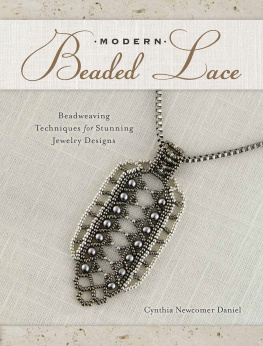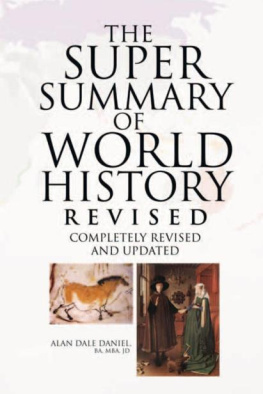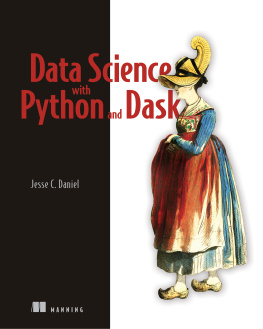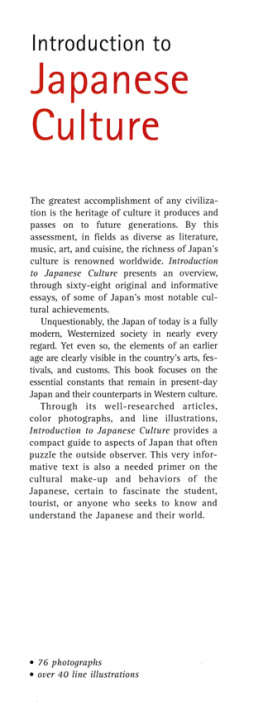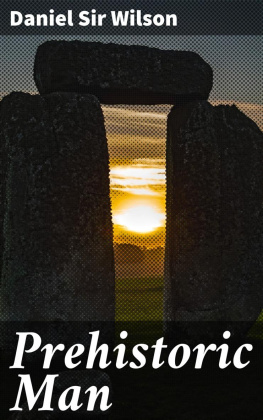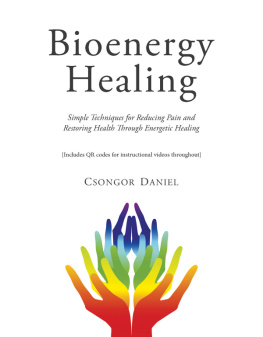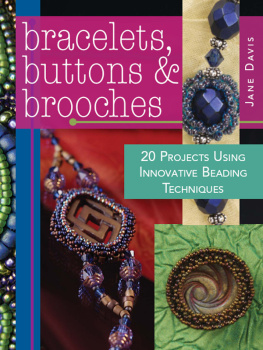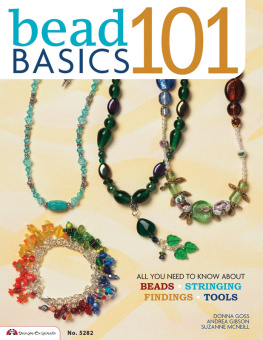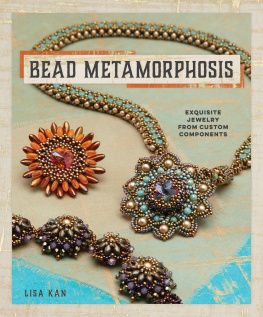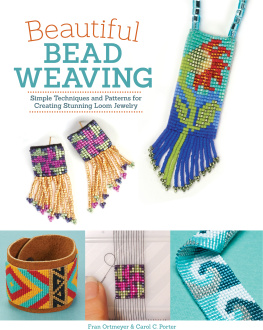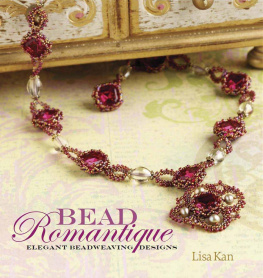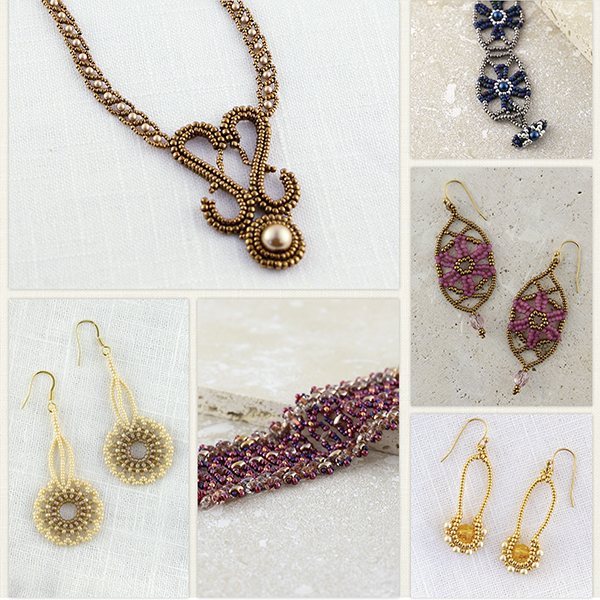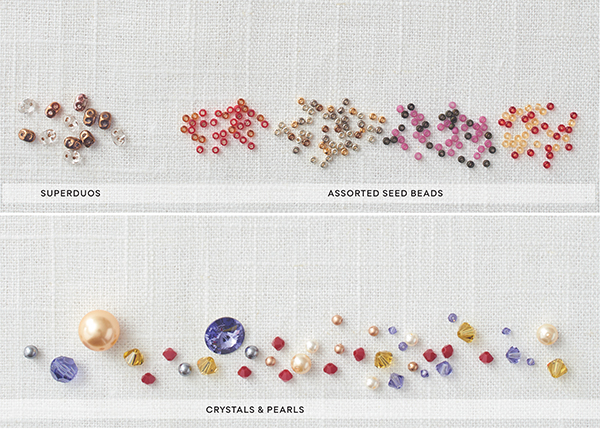Contents
Guide
Dedication
My grandmothers and parents were my first teachers; my husband is my comfort, support, and joy; and my friends keep it real. Thank you for everything you do. I couldnt have written this book without you.
Contents
Introduction
Beaded lace is a hybrid of lacemaking and beadweaving, and both have been part of my life for as long as I can remember. In traditional lacemaking, threads are knotted or woven together to make patterns; beaded lace mimics those patterns. When I was younger, I loved making lace using traditional methods; my threads and beads coexisted happily together. As time passed, I became more interested in beadweaving: lace takes a very long time to make, while beads are bright, shiny, and work up into something pretty in much less time.
I cant really say when I began making beaded lace; my beadwork has always been described as lacy, and it has gradually gotten more so over the years. I had a sort of epiphany several years ago when I realized that a bead could stand in for a single knot of lace. I quickly realized that many of my favorite beadweaving stitches resemble traditional lace stitches; from that moment on, I began applying things I had learned while making lace to designing my beadwork. When I started making beaded lace, I tried to use the same methods I had used with thread; as I continued to experiment, I realized that it was easier and better to let the beads be beads and focus on using traditional beadweaving stitches to make my beadwork look like lace, rather than trying to make lace stitches accept beads. If you are a lacemaker, you might find this notion as hard to accept as I did; but give it a go, and I think you will like the results. If you are not a lacemaker, rest assured that making lace with beads is much easier, and goes much faster, than making lace with thread.
There are so many different types of lace to choose from, and Ive tried to give you an overview of some of my favorite types in this book. I feel that I have just begun to scratch the surface of making beaded lace, and I hope that you will take what I have written and add your own chapters to the beaded-lace story.
In this book, you will learn how to make your own beaded lace. As you work the projects, youll learn how to bead the three main elements of lace: figures, cordonnets, and ground. Each project uses one or more of these elements to make a piece of jewelry; I hope that you will think about how to use them to create additional pieces of your own design. An earring can be the beginning of something else: hang a figure from a chain to make a pendant, or surround it with groundwork to make a bracelet. Pull part or all of a figure out of a necklace or bracelet to make earrings or ringseach of these projects can be reworked and combined to form the foundation for your own designs. Of course, I also hope that you will enjoy making them just as they are; it is my wish that you will find as much fun and satisfaction in making beaded lace as I do.
Part 1: The Basics
In this section, Ill go over the elements and types of lace used in the projects of this book and how I translated them into beaded lace, and provide some suggestions for designing your own beaded lace projects. If you have less experience with beadweaving or need to refresh your skills, I provide illustrated instructions for all of the stitches used in the designs.
Materials and Tools
If youve been beadweaving for a while, youll be making beaded lace in no time. If youre just starting out, this section will give you a good idea of what youll need to have on hand in order to make the projects in this book. Because not everyone likes the same thing, Ive given suggestions for making substitutions. I encourage you to experiment with these projects; in general, youll get the best results if you substitute beads of the same size, but stepping outside of the box and trying something quite different may lead to a wonderful new variation. Be playful!
Beads
Seed beads are a good choice for making lace with beads because of their size and the variety of colors and finishes available. Size 15 and 11 beads can be used for very intricate and delicate work, but dont discount the larger beads. Sometimes a pearl or a crystal adds just the right touch, and two-holed beads can provide wonderful structure.
Seed Beads
For these projects, youll need glass seed beads in sizes 8, 11, and 15. I recommend Japanese seed beads, and I use mostly Miyuki beads. You can use any type of seed bead you prefer in these projects; however, your work may turn out larger or smaller than mine. There are minuscule differences in the size of each bead from manufacturer to manufacturer, and those differences in size do add up over the course of the project.
Measure your work as you go, using more or fewer beads or motifs, to make sure that your beaded lace jewelry fits properly in the end.
There are many different types and finishes of seed beads; choose the ones that suit you for a more personalized look. Metallic seed beads are available in every price range; galvanized beads are the least expensive, but some people find that the finish wears off over time. There is a mid-range price finish described as permanent that lasts longer, if not forever; its a good choice if you dont want to use plated beads. Plated beads are the most expensive, and the silver ones do tarnish. Some people find that the plating comes off; others dont have that problem. Use whichever type you prefer or use colored beads instead.
Transparent seed beads give the look of gemstones, especially when used next to metallic beads. Before I use them, I like to test them with various colors of thread; one pass of the thread doesnt usually change the look much, but if you go through several times, youll often see a color change. Sometimes that color change works to your advantage and is exactly what you need; other times it ruins the look. Testing the thread before you start can save your project. Opaque beads give a solid look and wont change colors with thread; use them if you want a color that will stay the same no matter which thread you use.
Matte beads have a softness that I like, especially in lace. I find that they blend well with other colors and dont call too much attention to themselves. On the other side of the spectrum,

